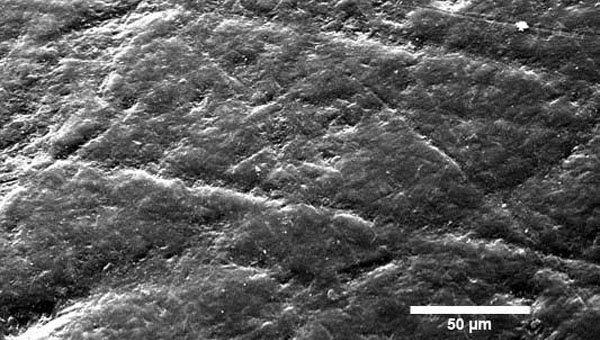Dietary habits in extant and extinct rodents; in extinct giant ground sloths; and in Tritylodontidae (extinct mammal-like reptiles)

Dental microwear pattern on the occlusal surface of one of the oldest sloth species, Octodontotherium grande, late Oligocene, Patagonia. Image: J.L. Green.
Summary
Dental microwear analyzes microscopic scars on the occlusal surfaces of animal teeth (mainly mammals) in order to evaluate the dietary habits of the studied species. This method can be applied both to extant and extinct mammals and has been used with different techniques: scanning electron microscopy, stereomicroscopy, and confocal microscopy.
My research focuses on the feeding ecology of extinct muroid rodents and tritylodontids (target tissue tooth enamel) as well as giant ground sloths (target tissue orthodentine).
Project Participants at NRM
Daniela Kalthoff (Principal investigator)
External Project Participants
Ian Corfe, University of Helsinki, Finland
Jeremy L. Green, Kent State University at Tuscarawas, USA (giant ground sloths)
Lars van den Hoek Ostende, Naturalis, Leiden, The Netherlands
Florent Rivals, Institut Català de Paleoecologia Humana i Evolució Social, Tarragona, Spain
Ellen Schulz, Max Planck Institute for Evolutionary Anthropology, Leipzig, Germany
Julia Schultz, University of Chicago, USA
Gina M. Semprebon, Bay Path University, Longmeadow, USA



